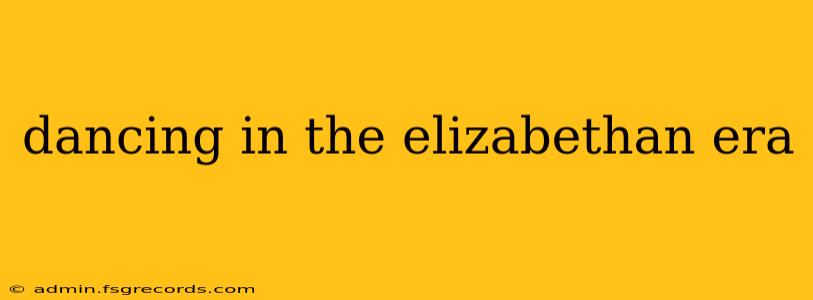The Elizabethan era, a period brimming with vibrant culture and artistic flourishing, held dance in high regard. Far from a mere pastime, dancing played a crucial role in social life, courtship rituals, and even courtly power plays. This exploration delves into the diverse world of Elizabethan dance, revealing its forms, social significance, and lasting legacy.
The Forms of Elizabethan Dance
Elizabethan dance wasn't a monolithic entity; rather, it encompassed a rich tapestry of styles, influenced by both English traditions and continental imports. Key forms included:
1. The Pavane: A Majestic Opening
The pavane, a stately and solemn dance, often opened formal balls. Characterized by its slow, measured pace and elegant steps, it demanded precision and grace. Performed by couples, the pavane symbolized courtly love and decorum, reflecting the era's emphasis on refined manners and hierarchical order.
2. The Galliard: A Lively Counterpoint
Following the sedate pavane, the galliard offered a lively contrast. Faster and more energetic than its predecessor, it showcased intricate footwork and leaps, demanding agility and skill. The galliard's spirited nature allowed for greater freedom of expression compared to the more formal pavane.
3. The Coranto: A Swift and Energetic Dance
The coranto, known for its quick, running steps, provided a further shift in tempo and mood. Its speed and intricate footwork made it a display of virtuosity, and its popularity spanned various social strata, from the nobility to the common folk.
4. Dances for the Masses: Jigs, Rounds, and Country Dances
Beyond the elaborate court dances, simpler forms enjoyed widespread popularity. Jigs, characterized by their lively rhythms and rapid footwork, often involved solo performances or small groups. Rounds and country dances, featuring simple steps and repetitive patterns, facilitated participation by larger numbers and promoted communal bonding.
The Social Significance of Dance
Dance in the Elizabethan era transcended mere entertainment. It served as a vital means of:
1. Social Interaction and Courtship
Balls and masques provided opportunities for social interaction and courtship. The elaborate dances, with their intricate steps and partner exchanges, facilitated communication and the subtle expression of romantic interest. Skill in dance could enhance one's social standing and attractiveness.
2. Courtly Power and Status
Court dances were carefully choreographed, reflecting the hierarchical structure of Elizabethan society. The positioning of dancers, the choice of dances, and the overall spectacle could subtly communicate power dynamics and social status.
3. Entertainment and Spectacle
Elaborate masques, incorporating dance, music, poetry, and elaborate costumes, were popular forms of entertainment at court and among the wealthy elite. These grand productions showcased the artistic talents of the era and provided a stunning display of wealth and power.
The Legacy of Elizabethan Dance
While the specific steps and styles of Elizabethan dance might be lost to us, its influence remains palpable. Many of the fundamental principles and social functions associated with dance during this period continue to resonate in contemporary dance forms and social practices. The importance of dance as a form of social interaction, courtship, and artistic expression remains as relevant today as it was in the vibrant Elizabethan era.
This exploration merely scratches the surface of the fascinating world of Elizabethan dance. Further research into historical dance manuals, paintings, and literary references will reveal even greater depth and nuance. It is a world waiting to be rediscovered and appreciated.

